MacQuarrie Country
A pilgrimage to the legendary hunting grounds of the Old Duck Hunters' Association, Inc.
A pilgrimage to the legendary hunting grounds of the Old Duck Hunters' Association, Inc.

Story and Photos by Keith R. Crowley
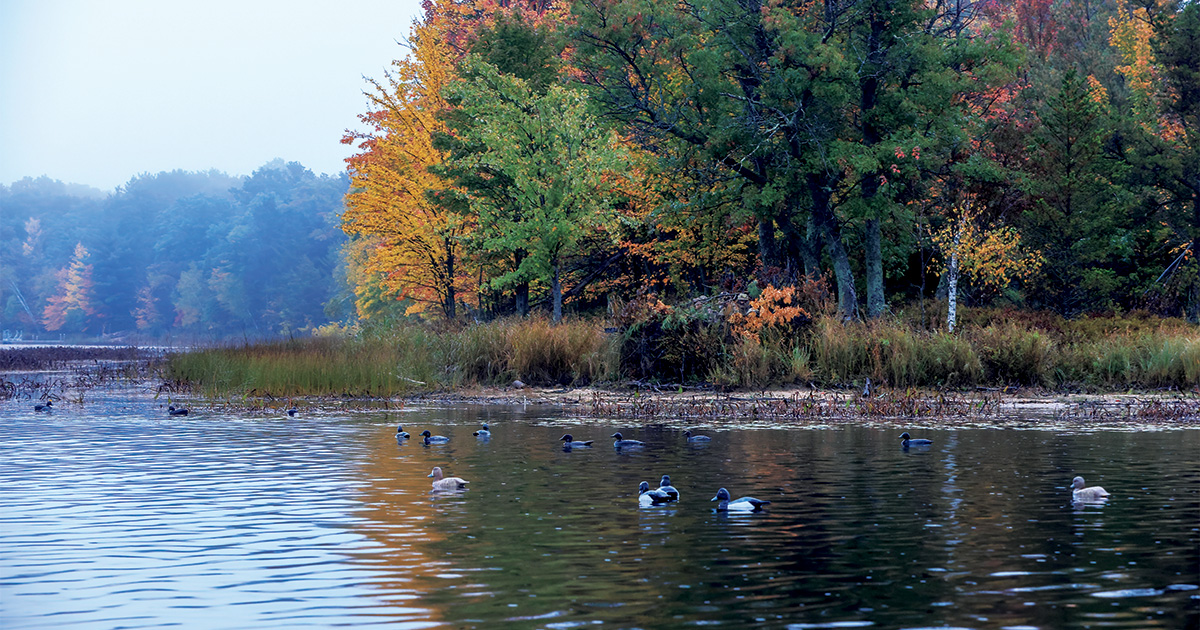
At four o’clock in the morning on October 8, 2021, I leapt to my feet and promptly tripped over Rosie, the 14-year-old yellow Lab sleeping next to the bed. The old girl barely moved, and I clambered back to my feet in the dark. With my dignity generally restored and no harm to either of us, I headed for the kitchen and the coffee pot.
In spite of that clumsy start, the day ahead held real promise—the promise of hunting at a place I’ve wanted to hunt for years. Decades really. I don’t know if I had truly slept at all, but I must have dozed for a little while, because I vaguely recalled a dream involving the smell of burnt powder and an image of feathers floating on a stiff breeze.
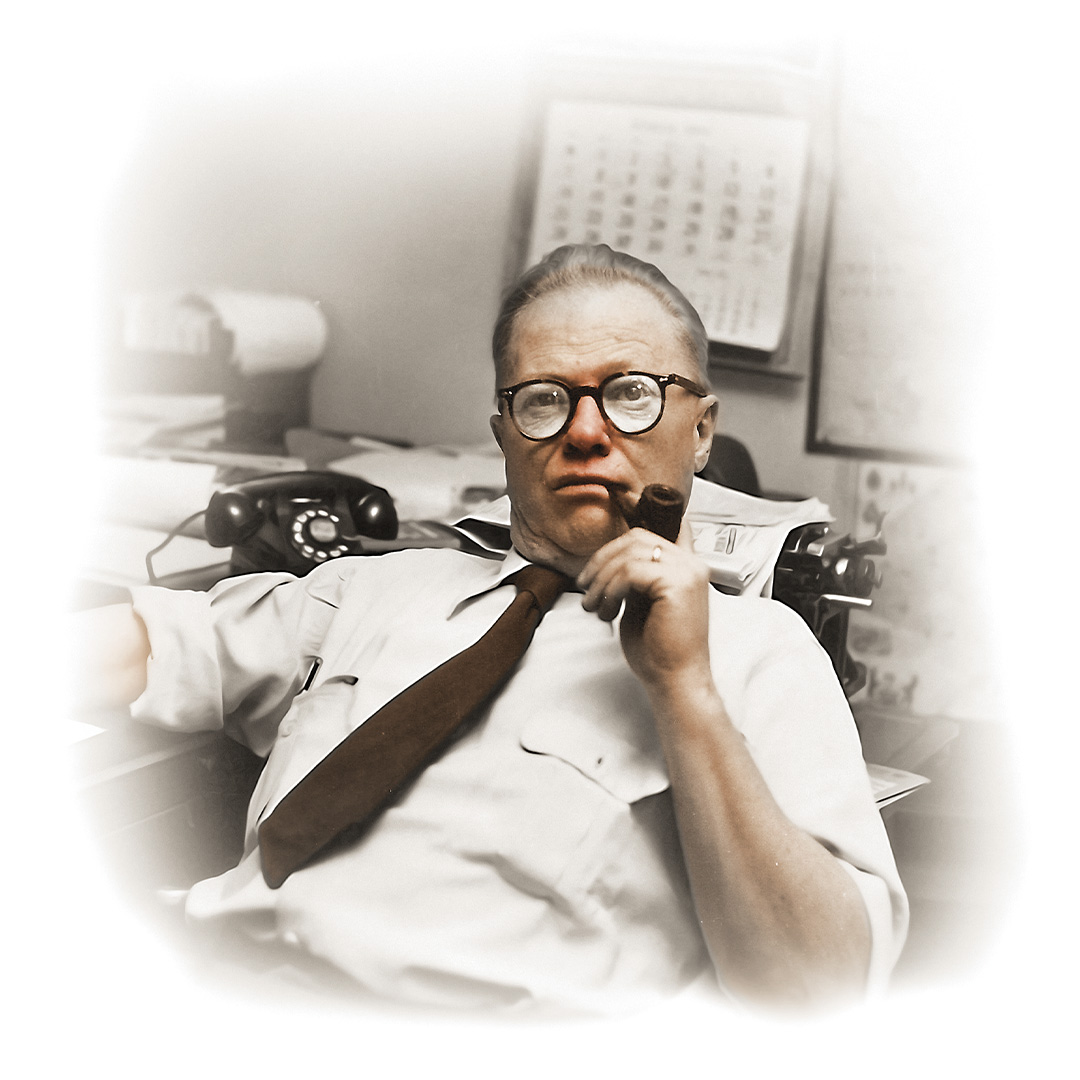
Gordon MacQuarrie recounted his own life and outdoor adventures in a series of magazine and newspaper articles, which he presented as fictional accounts of members of the Old Duck Hunters' Association. These stories have become classic works of outdoor literature.
This story would be so much better if it started with actual ducks in hand rather than the dreamy kind, but that wouldn’t be keeping strictly to the facts. And since the subject of this tale is an old ink-stained newspaperman who based his livelihood around accurate journalism, I owe you, and him, some honesty. So, while my goal for 2021 was to hunt at as many of Gordon MacQuarrie’s favorite spots in one duck season as I could, the truth is no ducks fell on that day.
MacQuarrie has legions of fans even decades after his death in 1956. People in his home state of Wisconsin still call him “the bard of the duck blind and the trout stream.” I think he’d like that, even though he swore that he was no poet. Whether he was a poet or not, MacQuarrie was one of the first in his profession to espouse a new hunting philosophy.
Some people ask why men go hunting. They must be the kind of people who seldom get far from highways. What do they know of the tryst a hunting man keeps with the wind and the trees and the sky?
MacQuarrie was introduced to waterfowling by his father-in-law, Al Peck, in late October 1927. On that first hunt, Peck dragged the “somewhat congealed” writer out of a freezing bed and hustled him to a point on Little Bass Lake, a place MacQuarrie later called “one of the most sought-after ducking points in all northwest Wisconsin.” The goal was to indoctrinate Mac into the grand sport of duck hunting. Clearly it took hold.
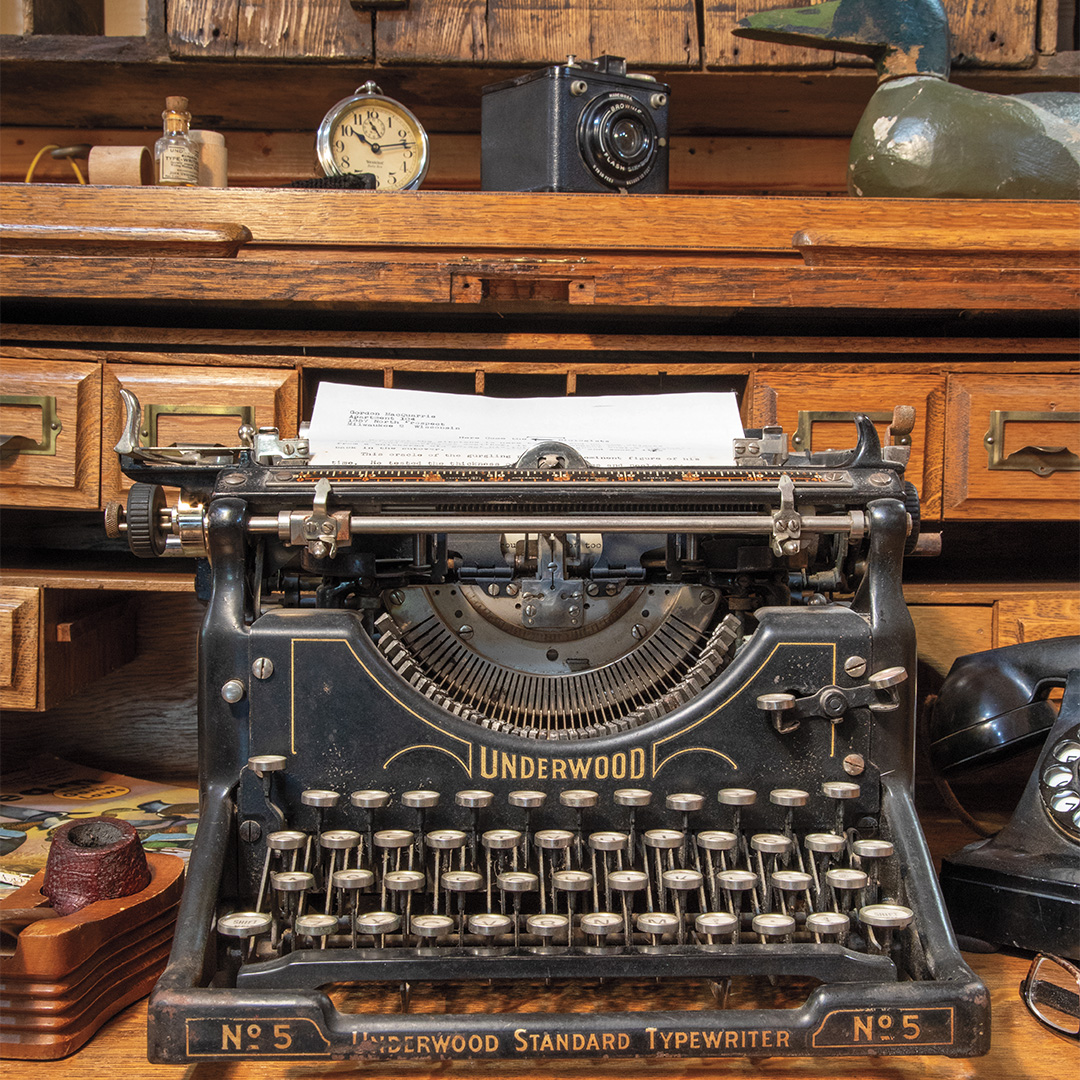
MacQuarrie wrote often and fondly about his days in the field with Peck. He created a series of fictional stories centered around the Old Duck Hunters’ Association, Inc. (ODHA). “Inc.,” MacQuarrie explained, stood for “incorrigible.” He wrote about Peck, transforming him into ODHA’s Mr. President, aka Hizzoner.
MacQuarrie’s stories were so popular that his name was often featured on the covers of the outdoor magazines of the day. Field & Stream, Outdoor Life, Sports Afield, and a dozen other periodicals published ODHA tales for years. The stories were full of humor, high jinks, and life lessons. In most, Peck was the master; MacQuarrie was the student and the stooge.
My quest to hunt at a handful of places immortalized in MacQuarrie’s writings was to begin where it logically should. I joined fellow MacQuarrie acolytes Dave Evenson and Mike Cole at that very point on Little Bass Lake where Mac began his love affair with duck hunting.
If I must choose among the sports that draw me into the open, it will be duck hunting. No other sport with rod or gun holds so much of mystery and drama.
Just for tradition’s sake, I brought along two of MacQuarrie’s own decoys, acquired years ago from his nextdoor neighbor. The decoys are smallish bluebills made of cork and wood by Ollie Drahn of Oshkosh, Wisconsin. Drahn carved in the 1930s and ’40s, and MacQuarrie obviously took a liking to the birds. He owned several dozen Drahn divers. Evenson added his hand-carved modern birds made of native white pine and basswood. In all we had 29 wood and cork decoys on the water.
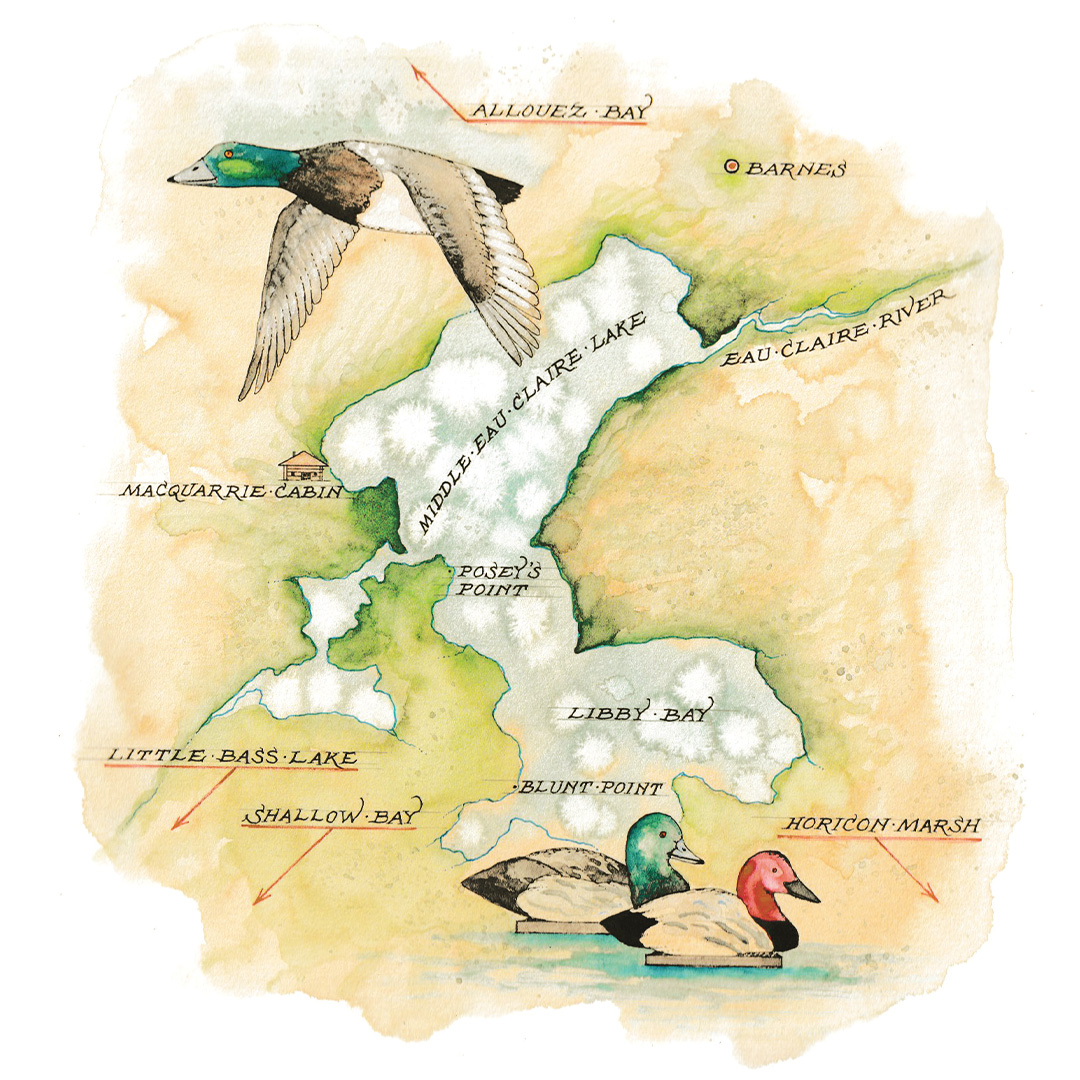
There were no ducks taken on the first day. Only a few buffleheads came by to take a look at our decoys and then departed hastily in the gloom. MacQuarrie wrote, “it is not all of duck hunting to hunt ducks.” I think that he and Mr. President would have sympathized with our fruitless efforts.
There is a great deceit in duck hunting by which men count their sport in terms of “limit bags” and “good shooting.” Be not fooled. These same men would greet the rising sun in season though they knew their chances of killing even a single duck were very, very poor indeed.
MacQuarrie’s perspective was telling. He lived through an era in which ducks were plentiful, then few, then plentiful again. For a time during his tenure there weren’t many ducks anywhere in northwest Wisconsin. The Dust Bowl was at its peak in 1936, and the ODHA’s favorite duck blinds sat high and dry, overlooking mudflats that once were covered with several feet of water.
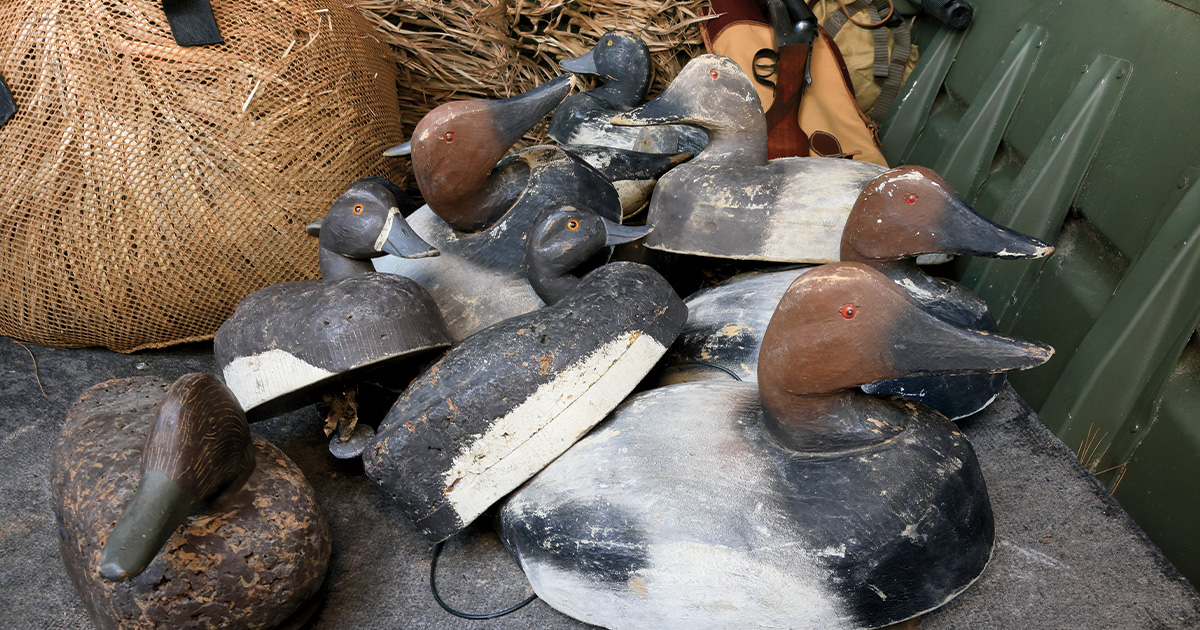
In the years since MacQuarrie hunted these parts, other things besides water levels have changed. Many of his favorite blinds are simply unavailable now because large lakeside homes occupy those sites. The shoreline willows and jack pines that used to hide MacQuarrie and Mr. President from late-season bluebills and wedge-faced canvasbacks have been replaced by boat lifts and shorn bluegrass. But, fortunately, that’s not the whole story.
ODHA locales where you can set decoys and listen for the slash of set wings in the autumn chill still exist. I feel blessed to know them. Take one of MacQuarrie’s favorite places in the world—Shallow Bay. Finding that spot took some sleuthing, because MacQuarrie was deliberately vague when describing its location. It’s the kind of sleuthing I genuinely enjoy, however, because it involves decoys and wet dogs and old shotguns.
There are so many ODHA stories about Shallow Bay that they get jumbled in my mind. But you will recognize these waters in classic MacQuarrie stories like “The Day I Burned the Oatmeal,” “The Little Flight,” “Shallow Bay Comes Back,” “The Bluebills Died at Dawn,” and even in lesser-known stories like “Rainy Day Ducks” and “The Windblown Flight.”
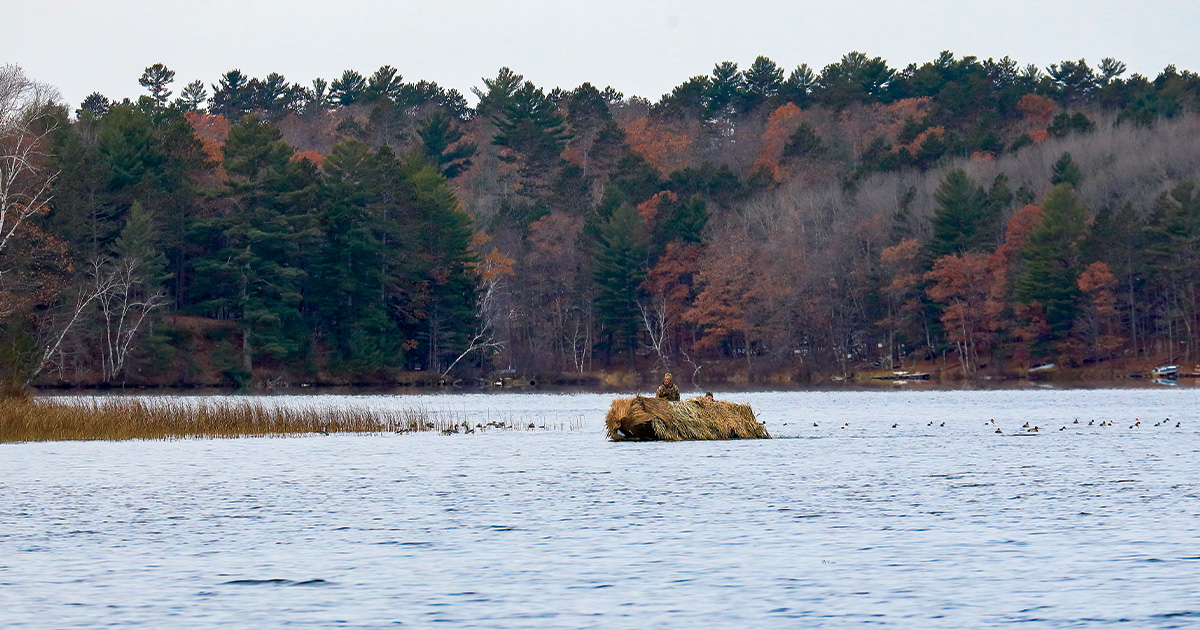
Though much has changed since MacQuarrie chased ducks across his beloved Wisconsin, today’s hunters can still toss out decoys on some of the waters immortalized in his writings.
Discovering those latter two stories, both written in the early 1930s and largely unseen since then, was the key to confirming the location of Shallow Bay. In those early tales, MacQuarrie disclosed its location—Nancy Lake. Afterward, likely by presidential decree, he became more clandestine in his descriptions of specific spots.
In mid-October, Evenson and I decided to go all-in with the MacQuarrie magic, and we placed 49 wooden birds on the waters of Shallow Bay. Eleven were authentic decoys from MacQuarrie’s time, including those two tiny Drahn bluebills. Mac also knew the power of big decoys, however, and he owned 24 large Herter’s balsa-bodied “supreme” decoys with wooden heads—12 canvasbacks and 12 bluebills. I brought six of those balsas to add to the spread, and I doubt anyone has set that many wooden decoys at Shallow Bay for decades. Perhaps Mac and Mr. President were the last.
The Shallow Bay hunt was busier than the Little Bass hunt, but not much more productive in terms of birds bagged. Ducks traded from bay to bay and through the pass where Mac and Hizzoner rowed each morning. But these birds were undoubtedly locals and had been shot at from this point many times. In all we fired just once at incoming ringnecks, and only one bird fell to the guns. Still, this place is sacred, and if you listen closely, you can hear the ghosts of the ODHA rattling in the oak leaves on the high hill behind the blind.
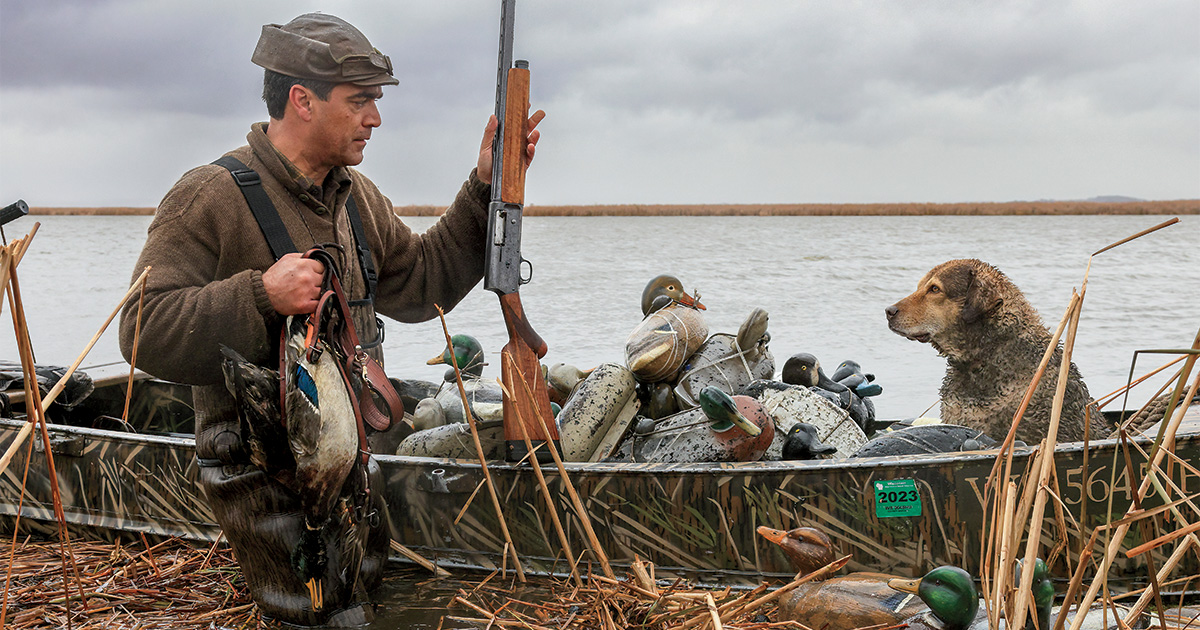
Bryan Muche on a vintage Armistice Day hunt with his Chesapeake Bay retriever, Dutch. Only wooden and cork decoys were used, along with other gear from MacQuarrie’s time.
Next stop was MacQuarrie’s home lake, Middle Eau Claire, in Bayfield County. The lake has suffered the same fate as other waters in the region. Where once Mac could walk around the 900-acre body of water with little chance of meeting another soul, today it’s surrounded by close-packed seasonal cabins and massive lake homes. A place that MacQuarrie called Blunt Point is a perfect example. Years ago, I obtained permission to hunt from the stubby willows there, and I did kill some bluebills, but now the homeowners on that point are less tolerant of shotgun reports in the gathering dawn.
A friend owns what MacQuarrie called Posey’s Point. Evenson, Cole, and I were able to set those wooden blocks there in early November. We watched local mallards and geese swing wide around the point many times that morning, and even had a few shots, but no birds fell. Anyway, “it’s not all of duck hunting to hunt ducks.”
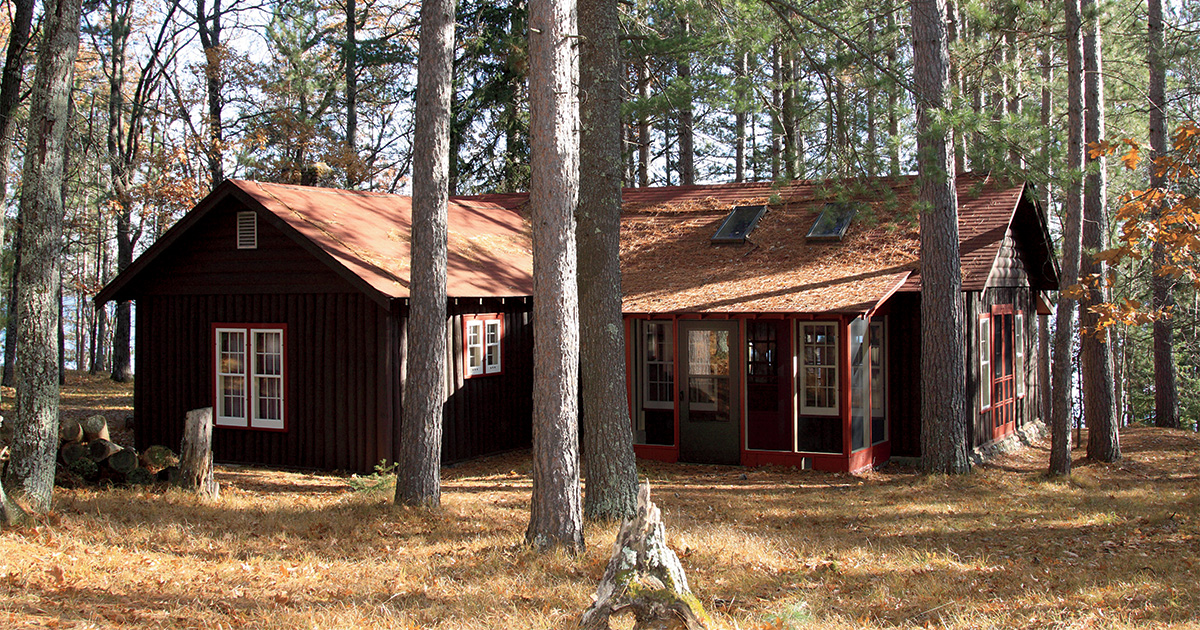
MacQuarrie’s cabin on Middle Eau Claire Lake served as headquarters for hunting and fishing adventures that inspired some of his most famous stories.
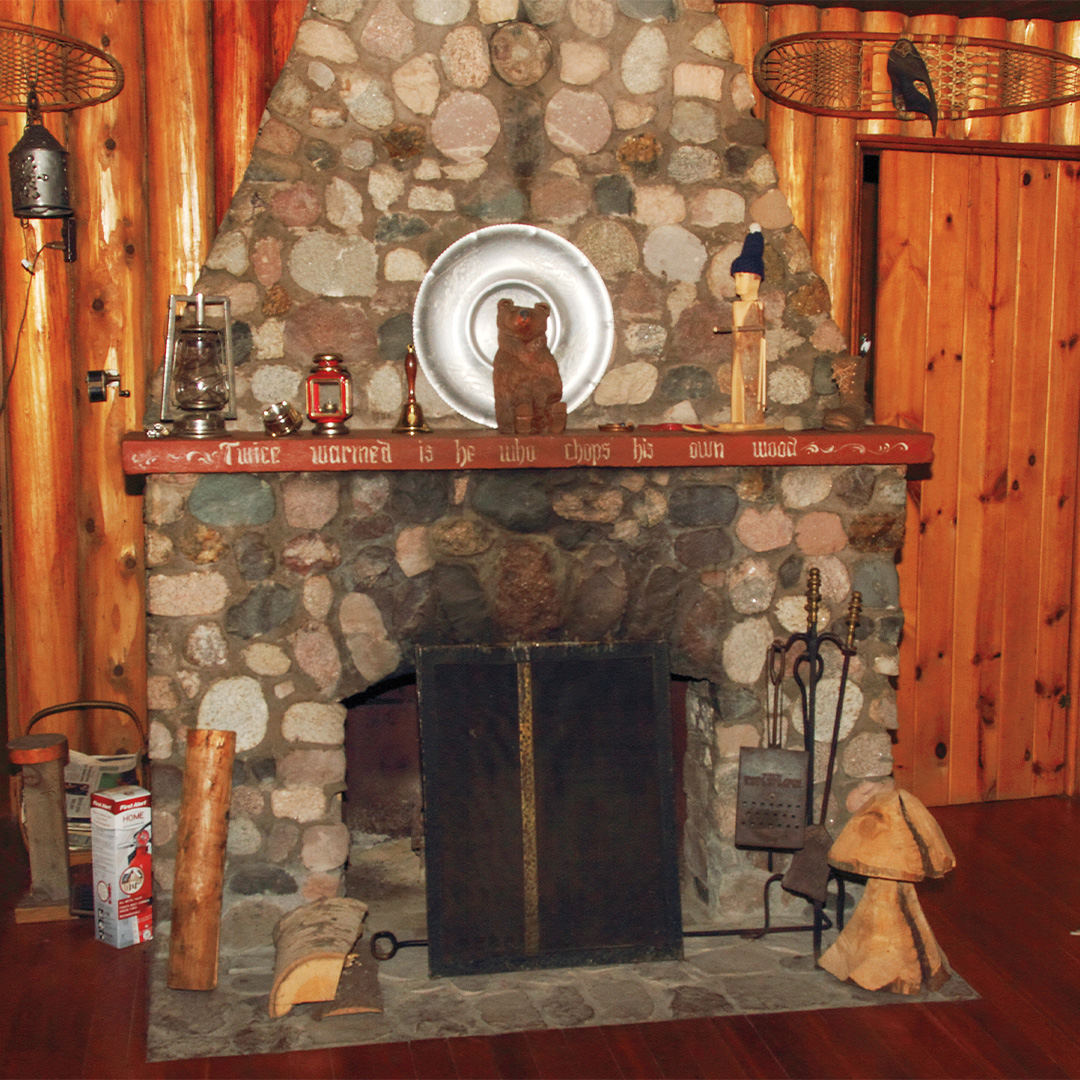
An inscription on the cabin’s fireplace mantel reads: “Twice warmed is he who chops his own wood.”
Today’s waterfowlers can still find places to hunt at Middle Eau Claire. A boggy shoreline next to the state-owned boat landing has potential for a makeshift blind. There is also an emergent reed bed in the southern bay, which Mac called Libby Bay, and people hunt there from boat blinds. The best hunting at Middle Eau Claire happens in a hurry, right before freeze-up. If you are ready to go at the drop of a hat, you can still set decoys on Libby Bay, where stories like “Canvasback Comeback,” “Make Mine Bluebills,” “Pothole Guys, Friz Out,” and others were set. MacQuarrie’s adoration of the place is clear.
I was thinking of ducks again—and of a place. A place to the north called Libby Bay where the coontail grows so thick that the bass employ traffic cops. A place where now bluebills might be rafted over fifteen feet of cool green water. . . . There are places that shouldn’t be passed up.
When MacQuarrie moved to Milwaukee in 1936 to become the outdoor editor of the Milwaukee Journal, his world expanded. He started hunting other famous Wisconsin waterfowling meccas with names like Winnebago, Koshkonong, and Horicon. Which brings us to the Armistice Day Gordon MacQuarrie Heritage Hunt organized by fellow waterfowling nostalgist Bryan Muche.
Muche has hunted Horicon Marsh his entire life. His great-grandfather homesteaded on the eastern shore of the immense wetland. On Veterans Day, 2021, Muche invited Outdoor Wisconsin’s Dan Small, Milwaukee Journal Sentinel outdoor editor Paul Smith, and yours truly to join him on his home waters on the 81st anniversary of this infamous day in upper-Midwest waterfowling history.
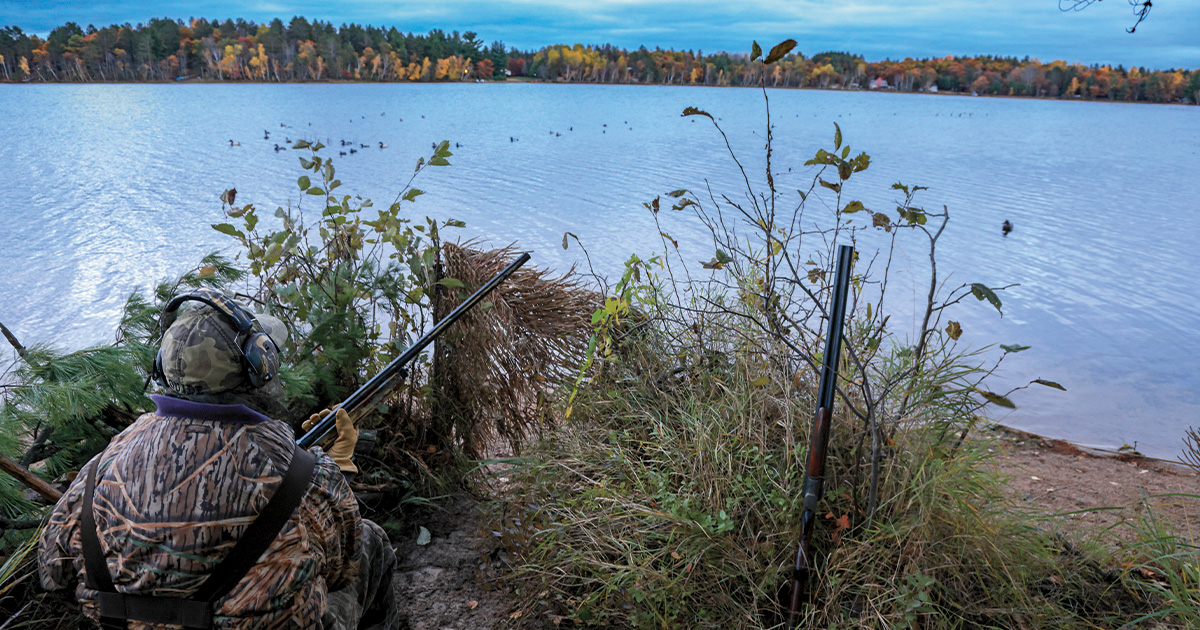
Dave Evenson watches over a spread of classic wooden decoys, including several blocks that MacQuarrie may have used in the same location.
On November 11, 1940, then known as Armistice Day, dozens of duck hunters died on the upper Mississippi River and nearby waters when an unforeseen blizzard hit. As the storm raged, MacQuarrie wrote about it from the scene at Winona, Minnesota.
The winds of hell were loose on the Mississippi Armistice day and night. They came across the prairies, from the south and west, a mighty, freezing, invisible force. They charged down from the river bluffs to the placid stream below and reached with deathly fingers for the life that beat beneath the canvas jackets of thousands of duck hunters.
Our hunt was less eventful, thank goodness. Although the winds howled and the rain slashed, it was too warm for snow. Still, we were glad for waterproof gear and a faithful outboard. Like the other MacQuarrie hunts, we used wooden decoys, and this time we hunted from vintage watercraft, including a 1944 Thompson Brothers duck boat. The big marsh gave us some birds—mallards and wigeon mostly. Hefting those birds from the boat at the landing was the best way I know to honor the memory of the Old Duck Hunters’ Association, Inc., and Mac’s infatuation with marshes.
No man is closer to the beginning of things and the eternal motherhood of the outdoors than when he is familiar with a marsh.
For the last leg of the ODHA journey, just before freeze-up in late November, I chose to hunt at a place MacQuarrie wrote about only once, in a story first published in 1933. In “City-Limit Ducks,” Mac and Mr. President hunt Allouez Bay in Mac’s hometown of Superior, Wisconsin. The broad, shallow bay, which sprawls eastward from the main shipping channel, was once so jammed with wild rice that you couldn’t get an outboard through it. Duck blinds scattered across the bay tell the story of migration and stinging winds and frozen fingers. Allouez is one of those rare MacQuarrie haunts that is wide-open to hunters today. In the late season it may have a mass of divers bobbing on its surface—especially if Lake Superior, just yards away, is churning in a November gale.
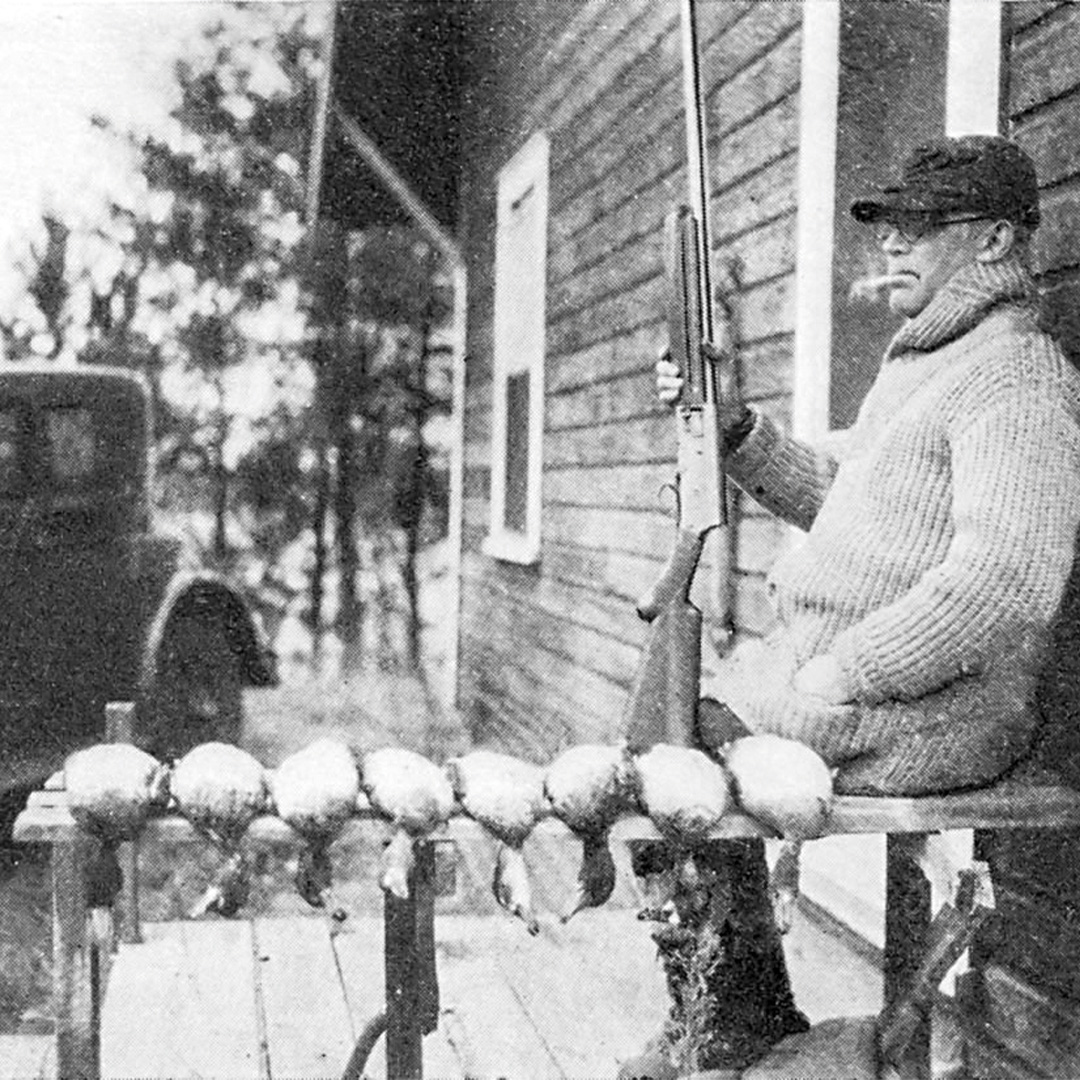
Mr. President, Al Peck, sits with a day’s bag of ducks harvested on Shallow Bay, circa 1932.
As with most waters in this area, timing is everything at Allouez. The birds don’t stage here like they did in Mac’s time. The rice is scarcer, and the ducks bust through in a hurry, tarrying only briefly on Lake Superior. Goldeneyes and geese might stay until the bay freezes over, but Mac’s beloved bluebills always seem to pass by en masse. Wait one day too long and they’re gone.
I suppose you could say the same of old duck hunters—wait one day too long and they’re gone. Then all that’s left are memories, traditions, and sentimental journeys to “places that shouldn’t be passed up.”
Keith R. Crowley is a lifelong hunter and award-winning writer and photographer. He is the author of the 2003 MacQuarrie biography Gordon MacQuarrie: The Story of an Old Duck Hunter, published by the Wisconsin Historical Society. You can reach him through his website at crowleyimages.com.
Gordon MacQuarrie first came to the Barnes, Wisconsin, area in 1916 to build a small shack with his father, who was a carpenter by trade. Eventually, that shack proved too cramped, and they built a modern cabin in 1936. From that point on, MacQuarrie used the cabin as a headquarters for a lifetime of outdoor pursuits, many of which are chronicled in popular outdoor magazines of the day and later in the Old Duck Hunters’ Association books: Stories of the Old Duck Hunters & Other Drivel, More Stories of the Old Duck Hunters, and Last Stories of the Old Duck Hunters. Harder-to-find volumes called MacQuarrie Miscellany and The Gordon MacQuarrie Sporting Treasury also hold some of the author’s ODHA work.
Recently, the Barnes Area Historical Association (BAHA) published two volumes of MacQuarrie’s newspaper columns from the Milwaukee Journal, compiled and edited by Dave Evenson. Right Off the Reel and Dogs, Drink & Other Drivel include early newspaper versions of many of MacQuarrie’s most beloved stories.
For those who would like to visit MacQuarrie Country, BAHA hosts an annual MacQuarrie pilgrimage that allows participants to visit key places featured in the ODHA stories. BAHA also supports a formal group of MacQuarrie fans known as the Old Duck Hunters Association Circle. Several hundred members strong, this group includes participants from across the country and beyond. To keep members informed about ongoing MacQuarrie research and events, the organization publishes a quarterly newsletter called The Other Drivel.
BAHA also has a museum with a room dedicated to MacQuarrie and the Old Duck Hunters’ Association. Several MacQuarrie decoys, one of his duck boats, his typewriter, a few personal effects, and other miscellaneous memorabilia are on display. Due to the museum’s limited hours, scheduling a private viewing is recommended for those interested in stepping into MacQuarrie’s world. Find out more at bahamuseum.org.
Ducks Unlimited uses cookies to enhance your browsing experience, optimize site functionality, analyze traffic, and deliver personalized advertising through third parties. By continuing to use this site, you agree to our use of cookies. View Privacy Policy